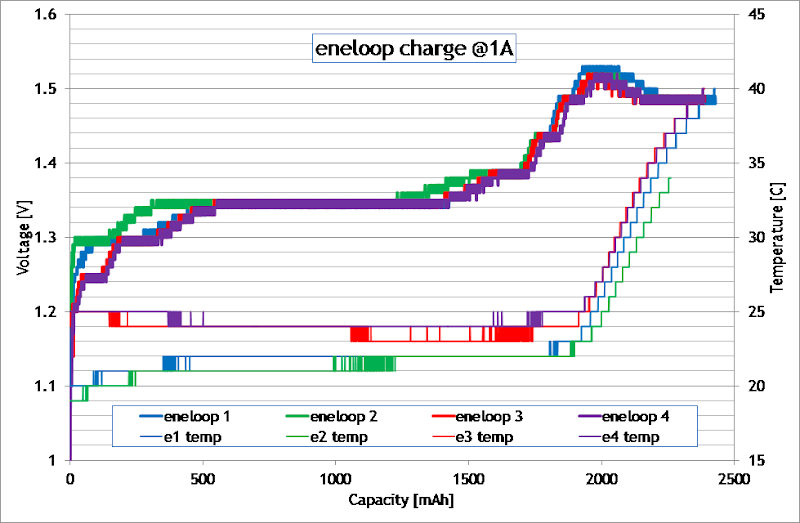samgab
Flashlight Enthusiast
There doesn't seem to be many, if any, consumer grade NiMH chargers out there that use a true ΔT/Δt termination method for NiMH cells (delta of Temperature over delta of time).
I believe this is the best method of charge termination for NiMH cells, because there is a very direct and specific correlation between increase of cell temperature and when a cell becomes fully charged, due to the change in the electro-chemical reactions that happen within the cell.
Just Max Temp termination alone is no good, because it's dependent on ambient temperature, whereas ΔT/Δt makes the ambient starting temp irrelevant.
Also just Max V termination (with follow-up trickle charge) isn't great because NiMH cells vary in voltage at full SOC (dependent on age, brand, ESR, Temperature, rate of charge,etc), and you can't get a true read of when a cell is fully charged from max V.
-ΔV is a quite good method too, but there is the risk of missing termination signal, particularly with slower charge rates.
But ΔT/Δt works down to (relatively) quite low rates, and is really accurate, and it cares for the cells nicely, because it is Temp increases that do the most harm to NiMH cells when charged due to electrolyte drying out and pressure build up inside the cells, (more harmful than the actual rate of charge (0.5C, 1C, etc)). But you need good, accurate thermistors, and they need to make good thermal/physical contact to the side of the cell being charged. If a cell was not inserted properly, Temp based termination would fail (so you'd need a couple of failsafe termination methods, such as Max V, Max temp, and Max Time).
I don't know of any consumer AA/AAA chargers that use TRUE ΔT/Δt termination, and I wonder why that is? Maybe it's patented (eg: http://www.google.com.au/patents/US5825159)?

I believe this is the best method of charge termination for NiMH cells, because there is a very direct and specific correlation between increase of cell temperature and when a cell becomes fully charged, due to the change in the electro-chemical reactions that happen within the cell.
Just Max Temp termination alone is no good, because it's dependent on ambient temperature, whereas ΔT/Δt makes the ambient starting temp irrelevant.
Also just Max V termination (with follow-up trickle charge) isn't great because NiMH cells vary in voltage at full SOC (dependent on age, brand, ESR, Temperature, rate of charge,etc), and you can't get a true read of when a cell is fully charged from max V.
-ΔV is a quite good method too, but there is the risk of missing termination signal, particularly with slower charge rates.
But ΔT/Δt works down to (relatively) quite low rates, and is really accurate, and it cares for the cells nicely, because it is Temp increases that do the most harm to NiMH cells when charged due to electrolyte drying out and pressure build up inside the cells, (more harmful than the actual rate of charge (0.5C, 1C, etc)). But you need good, accurate thermistors, and they need to make good thermal/physical contact to the side of the cell being charged. If a cell was not inserted properly, Temp based termination would fail (so you'd need a couple of failsafe termination methods, such as Max V, Max temp, and Max Time).
I don't know of any consumer AA/AAA chargers that use TRUE ΔT/Δt termination, and I wonder why that is? Maybe it's patented (eg: http://www.google.com.au/patents/US5825159)?


